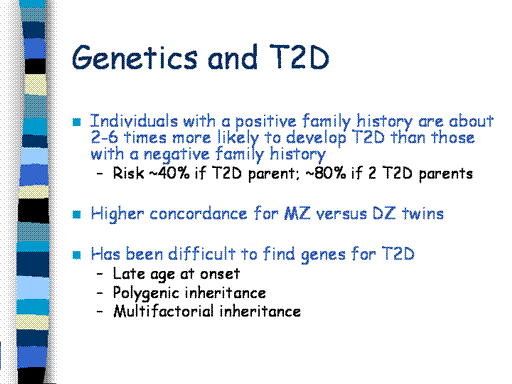| front |1 |2 |3 |4 |5 |6 |7 |8 |9 |10 |11 |12 |13 |14 |15 |16 |17 |18 |19 |20 |21 |22 |23 |24 |25 |26 |27 |28 |29 |30 |31 |32 |33 |34 |35 |36 |37 |38 |39 |40 |41 |42 |43 |44 |45 |46 |47 |48 |49 |50 |51 |52 |53 |54 |review |
 |
It has long
been known that T2D is, in part, inherited.
Family studies have revealed that first degree relatives of
individuals with T2D are about three times more likely to develop the
disease than individuals without a positive family history of the
disease. It has also been shown
that concordance rates for monozygotic twins, which have ranged from 60%
- 90%, are significantly higher than those for dizygotic twins.
Thus, it is clear that T2D has a strong genetic component.
However, it
has been difficult to find the genes that increase T2D risk for a number
of reasons. First, the disease
has a late age at onset. Thus,
individuals who will develop T2D in the future may be asymptomatic at
the time they are studied. As
previously indicated, T2D is polygenic and multifactorial.
The prevalence of these factors varies across families and
populations, and may mask the effect of any one susceptibility gene.
|